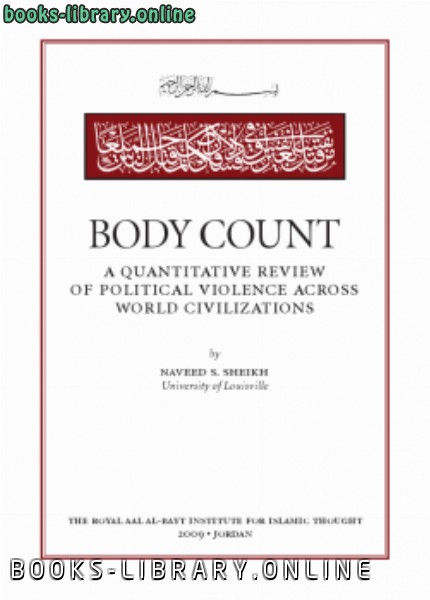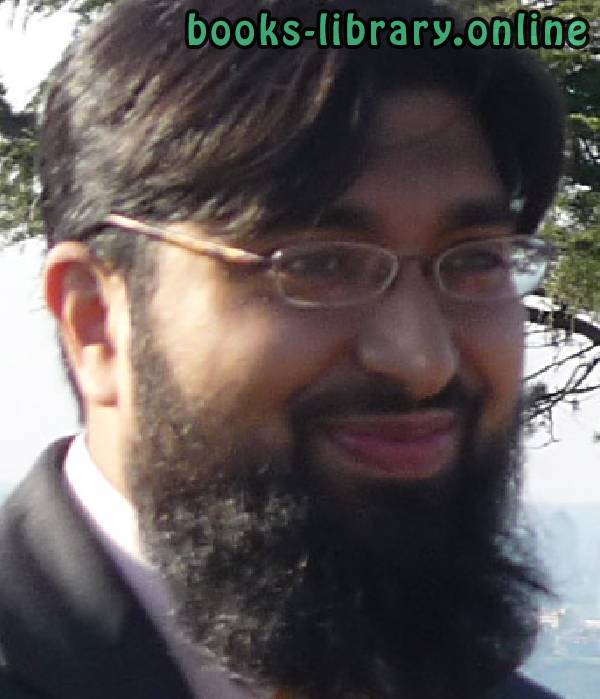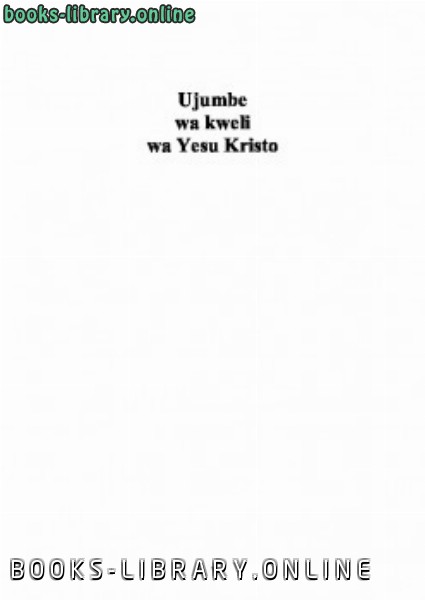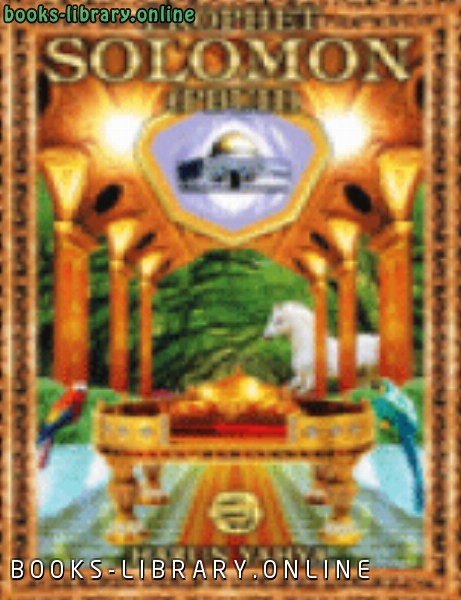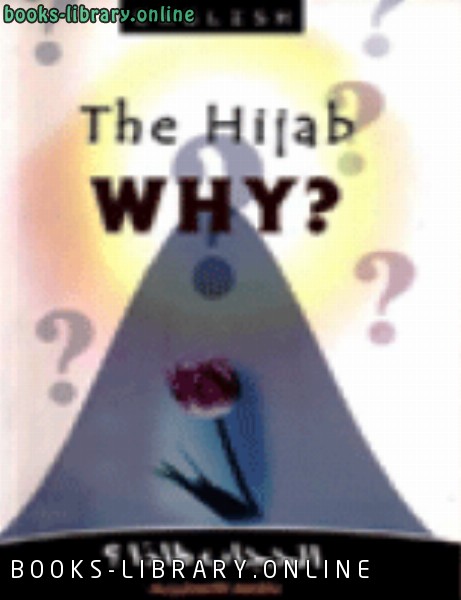كتاب Body Count a quantitative review of political violence across world civilizations
In his seminal work The Clash of Civilizations and the Remaking of World Order (1996), the Harvard political scientist Samuel Huntington reinvented Arnold Toynbee’s understanding of history as driven not only by impersonal material structures—territory, capital, population, and natural resources—but equally by interpersonal ide- ational structures. This perception seemed supported by empirical observation, and soon filled the intellectual and political lacunae which had attained particular salience in the wake of the implosion of Soviet-backed communism. Oftentimes, the reinstatement of religion—as the single most stable ideational structure in human history—was referred to as ‘the revenge of God’, but for social scientists and historians alike it became impossible to scientifically isolate the divine variable from terrestrial imperatives in the muddled socio-political praxes of earthlings. A casual observation, nonetheless, would suggest that discursive constructions about God (in politics, a short-hand for absolute truth) have been a necessary corollary to nearly all conflictual formations, from the substate to the transstate levels. The intensity of this linkage, and its constancy, is tested in this study. body count Objectives The present study attempts to quantify the human death toll of religious and political violence throughout the last two millennia and relating these to religio-cultural civiliza- tions. Adopting a modified version of Huntington’s civiliza- tional taxonomy, the study progresses along the following lines: First, a comprehensive data list of over 3,000 violent clashes in history, 0–2008 ce was developed. We then pro- ceeded to identify 276 of the most violent conflicts in his- tory, all with estimated human death tolls over 10,000, and ranked them by death toll. The result was then organized along civilizational lines, in order to attain a comparative understanding of socio-religiously conditioned violence. The findings are represented in four tables, leading to a comparative evaluation of civilizational violence. Methodology The study has first produced an aggregate list of major violent conflicts in the last two millennia, incorporating four categories of violence, namely war, civil war, democide, and structural violence. This shows the extent to which vio- lence has been an almost universal form of ‘doing politics’ in all parts of the inhabited world for as long as history has been recorded. The study then proceeded to quantify the death tolls in the most violent episodes to produce a list of the most violent conflicts in the last two millennia. These conflicts were then organized along civilizational lines,نفيد شيخ - نفيد شيخ حاصل على درجة البكالوريوس (مع مرتبة الشرف) في السياسة والتاريخ الحديث من جامعة باكنجهام ، حيث أكمل شهادته في عامين ، وحصل على خمس جوائز تقديرية للتميز الأكاديمي ، وتخرج مع أعلى وسام شرف في الجامعة ، إدغار بالامونتين وسام التميز ، قدمته له سيدة تاتشر في عام 1997. كما أنه حاصل على درجة الماجستير في العلاقات الدولية (بامتياز) من جامعة دورهام ، حيث حصلت أطروحة الماجستير على أعلى الدرجات منذ تأسيس قسم السياسة. وشرع في التسجيل للحصول على درجة الدكتوراه في مركز الدراسات الدولية بجامعة كامبريدج ، يعمل على أطروحة حول عدم انتشار الأسلحة النووية وتصور الهوية. حصل على زمالات في جامعة هارفارد (2001-02) وجامعة هوسي في طوكيو (2003-04). انضم إلى SPIRE كمحاضر دائم في العلاقات الدولية في سبتمبر 2005. ❰ له مجموعة من الإنجازات والمؤلفات أبرزها ❞ Body Count a quantitative review of political violence across world civilizations ❝ ❱
من مقارنة الأديان فرق ومذاهب وأفكار وردود - مكتبة المكتبة التجريبية.

قراءة كتاب Body Count a quantitative review of political violence across world civilizations أونلاين
معلومات عن كتاب Body Count a quantitative review of political violence across world civilizations:
Remaking of World Order (1996), the Harvard political
scientist Samuel Huntington reinvented Arnold Toynbee’s
understanding of history as driven not only by impersonal
material structures—territory, capital, population, and
natural resources—but equally by interpersonal ide-
ational structures. This perception seemed supported by
empirical observation, and soon filled the intellectual and
political lacunae which had attained particular salience in
the wake of the implosion of Soviet-backed communism.
Oftentimes, the reinstatement of religion—as the single
most stable ideational structure in human history—was
referred to as ‘the revenge of God’, but for social scientists
and historians alike it became impossible to scientifically
isolate the divine variable from terrestrial imperatives in
the muddled socio-political praxes of earthlings. A casual
observation, nonetheless, would suggest that discursive
constructions about God (in politics, a short-hand for
absolute truth) have been a necessary corollary to nearly all
conflictual formations, from the substate to the transstate
levels. The intensity of this linkage, and its constancy, is
tested in this study.
body count
Objectives
The present study attempts to quantify the human death
toll of religious and political violence throughout the last
two millennia and relating these to religio-cultural civiliza-
tions. Adopting a modified version of Huntington’s civiliza-
tional taxonomy, the study progresses along the following
lines: First, a comprehensive data list of over 3,000 violent
clashes in history, 0–2008 ce was developed. We then pro-
ceeded to identify 276 of the most violent conflicts in his-
tory, all with estimated human death tolls over 10,000, and
ranked them by death toll. The result was then organized
along civilizational lines, in order to attain a comparative
understanding of socio-religiously conditioned violence.
The findings are represented in four tables, leading to a
comparative evaluation of civilizational violence.
Methodology
The study has first produced an aggregate list of major
violent conflicts in the last two millennia, incorporating
four categories of violence, namely war, civil war, democide,
and structural violence. This shows the extent to which vio-
lence has been an almost universal form of ‘doing politics’
in all parts of the inhabited world for as long as history has
been recorded. The study then proceeded to quantify the
death tolls in the most violent episodes to produce a list of
the most violent conflicts in the last two millennia. These
conflicts were then organized along civilizational lines,
للكاتب/المؤلف : نفيد شيخ .
دار النشر : .
سنة النشر : 2009م / 1430هـ .
عدد مرات التحميل : 6109 مرّة / مرات.
تم اضافته في : الأربعاء , 27 مارس 2019م.
حجم الكتاب عند التحميل : 698.9 كيلوبايت .
تعليقات ومناقشات حول الكتاب:
In his seminal work The Clash of Civilizations and the
Remaking of World Order (1996), the Harvard political
scientist Samuel Huntington reinvented Arnold Toynbee’s
understanding of history as driven not only by impersonal
material structures—territory, capital, population, and
natural resources—but equally by interpersonal ide-
ational structures. This perception seemed supported by
empirical observation, and soon filled the intellectual and
political lacunae which had attained particular salience in
the wake of the implosion of Soviet-backed communism.
Oftentimes, the reinstatement of religion—as the single
most stable ideational structure in human history—was
referred to as ‘the revenge of God’, but for social scientists
and historians alike it became impossible to scientifically
isolate the divine variable from terrestrial imperatives in
the muddled socio-political praxes of earthlings. A casual
observation, nonetheless, would suggest that discursive
constructions about God (in politics, a short-hand for
absolute truth) have been a necessary corollary to nearly all
conflictual formations, from the substate to the transstate
levels. The intensity of this linkage, and its constancy, is
tested in this study.
body count
Objectives
The present study attempts to quantify the human death
toll of religious and political violence throughout the last
two millennia and relating these to religio-cultural civiliza-
tions. Adopting a modified version of Huntington’s civiliza-
tional taxonomy, the study progresses along the following
lines: First, a comprehensive data list of over 3,000 violent
clashes in history, 0–2008 ce was developed. We then pro-
ceeded to identify 276 of the most violent conflicts in his-
tory, all with estimated human death tolls over 10,000, and
ranked them by death toll. The result was then organized
along civilizational lines, in order to attain a comparative
understanding of socio-religiously conditioned violence.
The findings are represented in four tables, leading to a
comparative evaluation of civilizational violence.
Methodology
The study has first produced an aggregate list of major
violent conflicts in the last two millennia, incorporating
four categories of violence, namely war, civil war, democide,
and structural violence. This shows the extent to which vio-
lence has been an almost universal form of ‘doing politics’
in all parts of the inhabited world for as long as history has
been recorded. The study then proceeded to quantify the
death tolls in the most violent episodes to produce a list of
the most violent conflicts in the last two millennia. These
conflicts were then organized along civilizational lines,
 مهلاً !
مهلاً !قبل تحميل الكتاب .. يجب ان يتوفر لديكم برنامج تشغيل وقراءة ملفات pdf
يمكن تحميلة من هنا 'تحميل البرنامج'

نوع الكتاب : pdf.
اذا اعجبك الكتاب فضلاً اضغط على أعجبني و يمكنك تحميله من هنا:


كتب اخرى في مقارنة الأديان
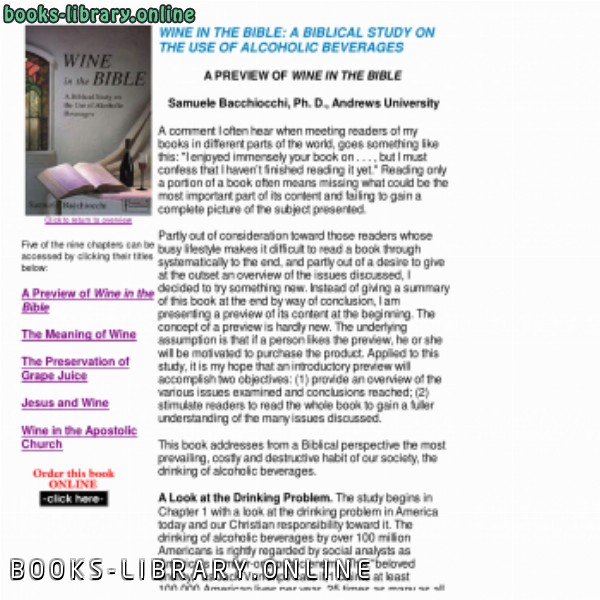
wine in the biblical study on the use of alcoholic beverages PDF
قراءة و تحميل كتاب wine in the biblical study on the use of alcoholic beverages PDF مجانا
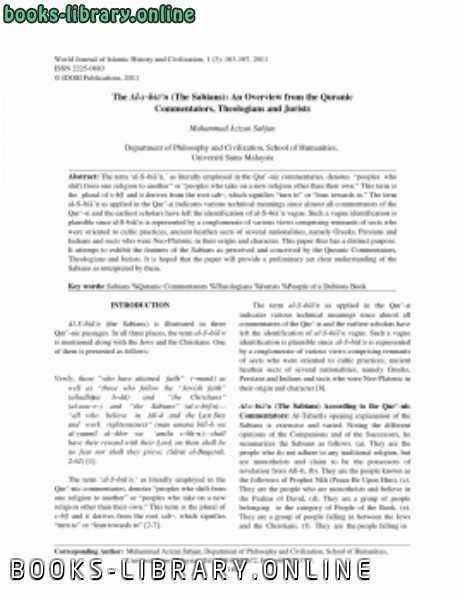
The Al sbin The Sabians An Overview from the Quranic Commentators Theologians and Jurists PDF
قراءة و تحميل كتاب The Al sbin The Sabians An Overview from the Quranic Commentators Theologians and Jurists PDF مجانا
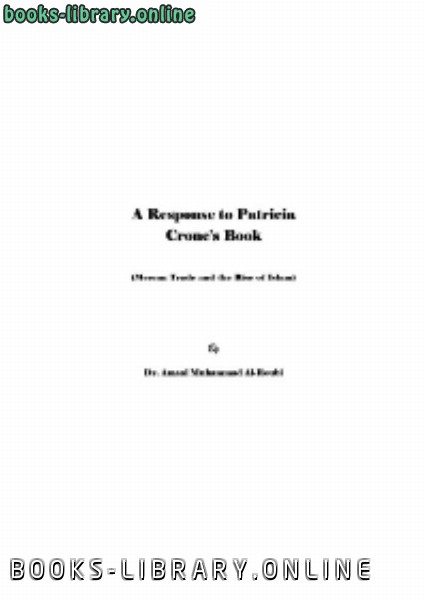
A Response to Patricia Crone 039 s Book Meccan Trade and the Rise of Islam PDF
قراءة و تحميل كتاب A Response to Patricia Crone 039 s Book Meccan Trade and the Rise of Islam PDF مجانا
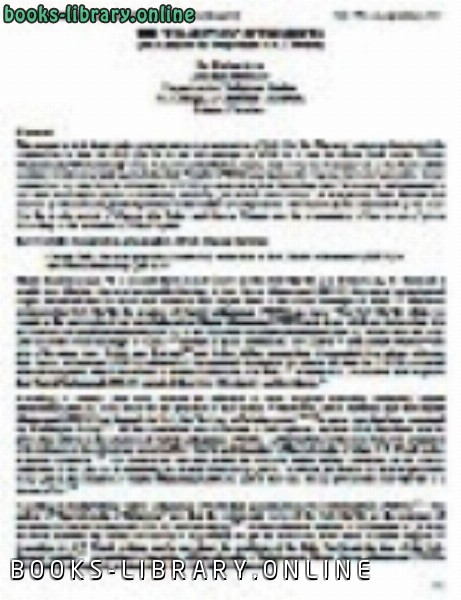
THE “COLLECTION” OF THE QUR’ĀN An Analysis the Objections of ATWelch PDF
قراءة و تحميل كتاب THE “COLLECTION” OF THE QUR’ĀN An Analysis the Objections of ATWelch PDF مجانا
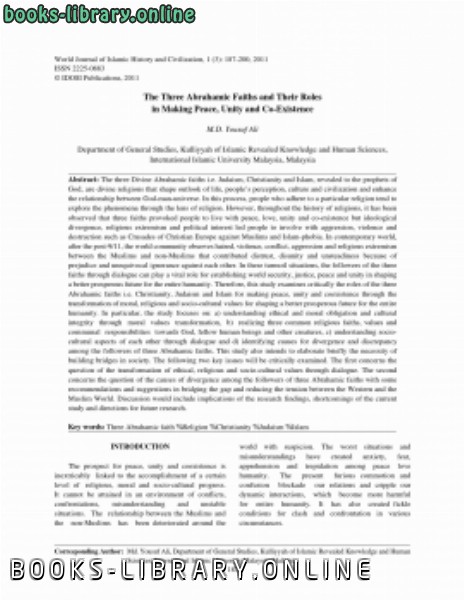
The Three Abrahamic Faiths and Their Roles in Making Peace Unity and Co Existence PDF
قراءة و تحميل كتاب The Three Abrahamic Faiths and Their Roles in Making Peace Unity and Co Existence PDF مجانا
